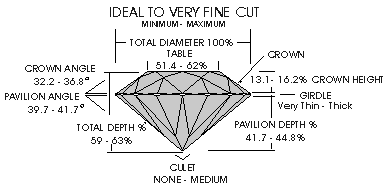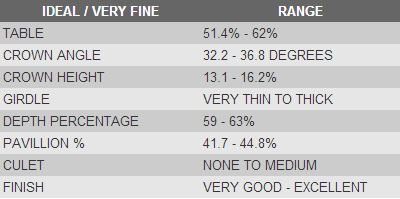The Four C’s of Diamonds
The price of a diamond varies depending on the four C’s: Cut, Color, Clarity, and Carat Weight.
1. Cut
When a diamond is cut to ideal proportions, the light will reflect from one mirror-like facet to another and disperse through the top of the stone, resulting in a brilliant display. Diamonds that are cut too shallow or deep will lose light through the sides and bottom of the stone and may have a dark center.
2. Color
Diamond color is graded on a scale from D to Z. Truly colorless stones are rated D and are extremely rare. Value starts to drop significantly at grades L, M, and N and then increases again at the very end of the spectrum, which includes fancy diamonds that can be yellow, blue, pink, or another color.
3. Clarity
Virtually all diamonds have some type of inclusions or flaws. The difference in the clarity of stones depends on the naked eye or only when magnified 10 times under a microscope. The location of the flaws is also important. Clarity is graded on a scale with flawless (F) or internally flawless (IF) at the top, followed by VVS1 and VVS2 (very, very slight inclusions), VS1 and VS2 (very slight inclusions), SI1 and SI2 (slight inclusions), and I1, I2 and I3, which means inclusions are visible to the naked eye. The smaller the number, the fewer the inclusions. Diamonds any lower on the clarity scale are not considered gemstones and are used mainly for industrial purposes.
4. Carat Weight
The carat is a unit of weight derived thousands of years ago from the relatively constant weight of the carob seed. Carats are divided into 100 points. The carat weight is the size of the stone and has no bearing on the color and clarity of a diamond.





